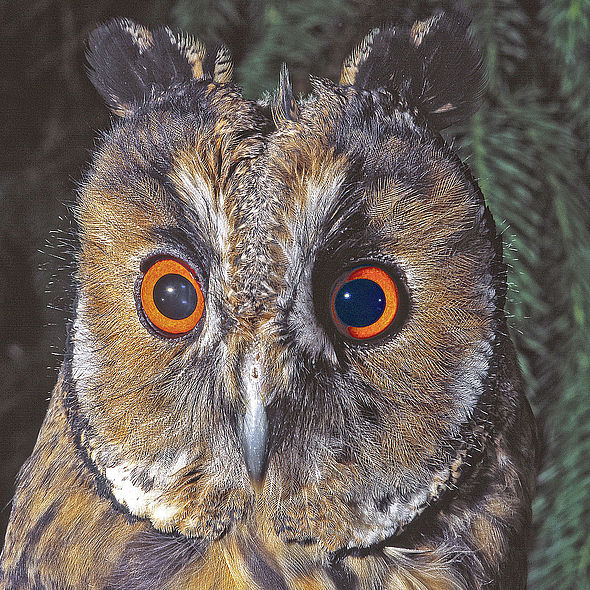Asio otus
Interesting facts: The distinctive ears of the long-eared owl have given the species its name. The real ears are found on the side of the head and can detect even the slightest noise made by its prey. The long-eared owl can turn its head by up to 270 degrees. During the day, the skilful hunter mostly hides in the forest. During dusk and the night, it hunts almost silently, preferentially mice. In winter, up to 30 long-eared owls roost together, sometimes even in our parks. With its good camouflage, the pellets and traces of excrement on the ground usually provide evidence of it.
Characteristics: Long feather ears, yellow to orange-red eyes, brown to beige-coloured plumage
Body length: Longer than 30 cm (longer than a blackbird)
Distribution: Edges of forests, parks, urban areas

